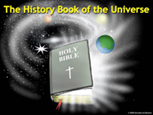Too long ago to matter?
Many people doubt the story of the Flood because they don’t think that there is any evidence—it would be a one-of-a-kind event, after all. Most of us have been taught that everything we see—erosion, wind, water-flow—has always been happening at a nearly consistent rate for millions of years. This idea, called uniformitarianism, assumes that, for the most part, canyons and fossils, mountains and rock layers, were created gradually over long periods of time. The Grand Canyon, the Himalayas, the ocean basins, they all came about by the same processes we see today at basically the same rate.
But what if there’s another explanation? What if the evidence suggests a completely different picture of the earth’s past?
Taking another look
The image of Noah’s Ark that you may have seen in children’s books or painted on nursery walls is often small and cramped with giraffe heads sticking out of the top. But the real Noah’s Ark, the one described in the Bible, would have been around 510 feet long and 51 feet tall—and amazingly seaworthy in even the roughest seas. This is a ship that could have kept the occupants safe during a year-long ordeal.
During the Flood, raging water, enough to cover the entire earth, transformed the landscape, laid down layer upon layer of sediment, and formed most of the fossils that we are still digging up today. The earth shows evidence, not of gradual change, but of one cataclysmic event that completely transformed the world and left us with an amazing testimony to the power of our Creator.
But this destruction was not without purpose. God is love, but He also must judge wickedness. The people of Noah’s day did not care about justice or doing what they knew to be right. Instead of seeing the Ark that Noah was building as a means of escape, they rejected the idea of such a catastrophe and were left outside of the saving walls of the ship. Noah was saved, not because of His own “good deeds,” but because of God’s provision alone.
All of us have that same offer today. God sent another Ark—His only Son—to pay the penalty for sin (Romans 6:23)—that is, to die a perfect sacrifice (Hebrews 10:11–14), covering the sins of all who believe. What God said in His Word, the Bible, about Noah and the Ark is true (and we can see evidence of this in the geologic record of a worldwide watery catastrophe) and what He says about our need for His gift of salvation is true as well. When we repent of our sins and trust in the death and resurrection of His Son, Jesus Christ, on our behalf, we will be saved from the destruction to come.
For an interesting video on the subject please visit: https://www.youtube.com/watch?v=lZbkOTeeyE0

































